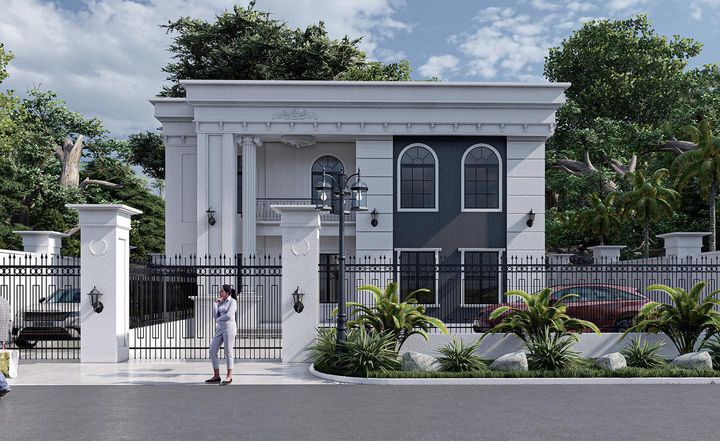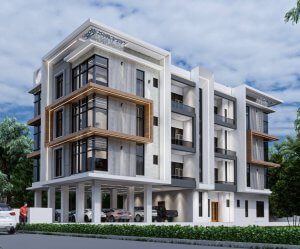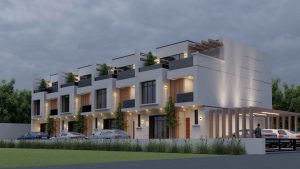

Biophilic architecture emphasizes the integration of nature and natural elements into the design of buildings and spaces. This design approach recognizes the positive impact of nature on human well- being and seeks to enhance our connection to the natural world. Here are some ways nature influences biophilic architecture:
Natural Light: Biophilic architecture often prioritizes maximizing natural light within a space. Large windows, skylights, and open floor plans allow sunlight to penetrate deep into a building, reducing the need for artificial lighting and improving occupants’ mood and productivity.
Greenery: Incorporating plants and living walls into building designs not only improves air quality but also creates a sense of connection to nature. Greenery can be integrated into interior spaces, courtyards, or rooftop gardens.
Natural Materials: The use of natural materials such as wood, stone, and bamboo in construction and interior design helps evoke a sense of the outdoors indoors. These materials create warmth and authenticity in a space.
Biophilic Forms and Patterns: Architectural elements inspired by natural shapes and patterns, like the fractal geometry of leaves or the Fibonacci sequence, can be used to create visually pleasing and harmonious environments.
Water Features: The inclusion of water features, such as ponds, fountains, or even indoor water walls, can mimic the soothing sounds of nature and enhance the overall ambiance of a space.
Views of Nature: Designing buildings to offer views of natural landscapes, whether it’s a forest, a river, or a garden, allows occupants to connect with the outside environment, even when indoors.
Natural Ventilation: Biophilic architecture often incorporates natural ventilation systems that allow fresh air to flow through the building, improving indoor air quality and reducing the need for mechanical ventilation.
Dynamic and Interactive Spaces: Designing spaces that change with the seasons or the time of day, such as using movable walls or adjustable shading devices, encourages occupants to engage with their environment and stay connected to nature’s rhythms.
Biophilic Color Palettes: Choosing color schemes inspired by nature, such as earth tones or soft blues and greens, can create a calming and visually appealing atmosphere.
Incorporating Wildlife: Creating habitats for local wildlife, like birdhouses or butterfly gardens, can contribute to biodiversity and offer opportunities for occupants to observe and interact with nature.
In summary, the influence of nature in biophilic architecture goes beyond aesthetics. It aims to enhance human well-being, productivity, and sustainability by integrating natural elements, patterns, and processes into the built environment. This approach recognizes the profound impact that a connection to nature can have on our physical and mental health, making it a significant trend in modern architecture and design.



